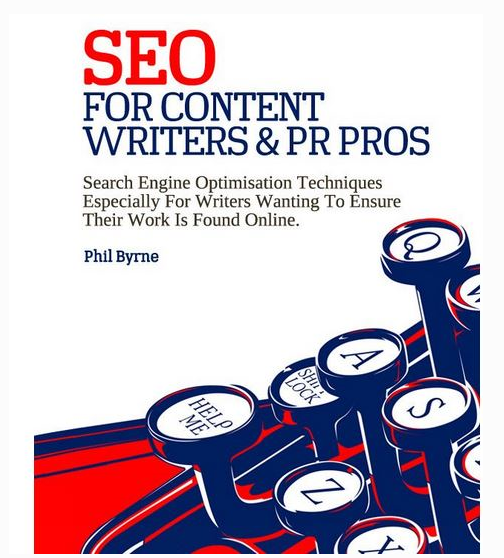Googling your business name again? Don’t worry, we all do it. There’s something strangely addictive about checking your Google ranking, after all. We hope for the best but even if it’s not as good as we'd imagine, there’s still some grim satisfaction to be gained, because we know that with a little elbow grease, we’ll start to see our site rise up the ranks.
The hard part is knowing exactly which tasks will help you improve your website’s position. There are plenty of background tweaks and content checks you could work on, but without a solid idea of what you need, you may be concentrating valuable resources on areas of your website that won’t actually make that much of a difference to your Google ranking.
That’s why I’ve put together 10 tasks you can get on with straight away to improve your website’s SEO, with no gimmicks or shortcuts included. Read on...
1.Fill in adequate meta descriptions
We all know how important meta descriptions are, but when it comes to filling in all those metadata forms in the back-end, it takes a very disciplined person to complete them perfectly every single time.
If you have a lot of products on your site, or a lot of separate pages, you might need to put together a task team to get this done in a timely manner. It’ll all be worth it when you see your domain authority creeping up.
2. Buff-up your security
Google loves safety. So much so that sites with good security measures in place for their visitors get brownie points when it comes to Google rankings.
The first thing to check if your rankings have suddenly slumped is your security certificate. It’s easy to forget to renew it but it can have big implications for your website’s reputation online. Incorporates a Secure Sockets Layer (SSL) is a huge step towards completely securing your site against security breaches. Ask your IT team to create a security plan and implement their suggestions as quickly as possible.
3. Include more pictures - and optimise them!
People find information much easier to digest when pictures are used to break it up. Google recognises this and naturally favours sites with useful, relevant imagery with all the correct metadata filled in.
Good, original photography of your company and the work or products you create is the best possible source for these images. If you’re not in a position to take new photos currently, try looking at free-to-use stock imagery websites like Pixabay for some temporary placeholders. However, be warned: irrelevant, cheesy stock imagery is not a good look for any business.
4. Put a blogging schedule together - and use it
Regularly updated, useful content is always favoured by your customers and that means Google loves it too. Blogging is still the number one way to keep that content lemony fresh, and the beauty of a blog post is, it can be about anything. So, if you’re looking to tell people about a new service you offer, do it here. If you’ve just taken on new team members, a blog post is a great way to shout about it.
Word of caution though - always make sure you slip in one outward-bound link and two inward-bound links in each post. It really helps with your credibility.
5. Be mobile-efficient
Is your website mobile-friendly? Is it actually mobile-friendly?
Here’s how to test it. Send the homepage url to everyone in your office and ask them to open it on their phones. By the natural order of things, there will be a range of different models and ages of smartphones in use throughout your team, giving you an accurate representation of what your website looks like to almost any phone user.
Now the hard part: which bits of your site look weird? Which don’t function? Note it all down in an audit document and send it through to your developers so they can fix what’s broken and send your ranking back up the charts.
6. Make it snappy
If visitors to your website are having to wait for ages for your pages to load, they aren’t going to stick around. Google penalises websites with long loading times because it makes them look bad for recommending them - so make sure your pages load fast!
There are a number of ways you can do this. Look into reducing the size of images on your pages, you could ask your developers to reduce the code size on certain pages, or if you use Wordpress, you could look into plugins that help slim down your load times.
7. Consider your keywords
When was the last time you gave a thought to your company’s researched keywords? If your customers are searching for terms that will lead them directly into your lap, use those keywords liberally, and in useful places.
Headings and subheadings are your best options, but including keywords within block text is another great way to show google that your content is relevant.
8. Make sure it's easy to read
Nobody likes a showoff, especially when it comes to web content. Google loves it when you get straight to the point, and likes it even more when you write in clear, concise sentences.
Instead of writing out a long paragraph about your company on the “about” page, why not chop that content into short, snappy paragraphs with purpose? If you’re writing about a complicated process or service, consider bullet points to help readers take in the information. It really will make a world of difference.
9. Get some authority
If you’re looking to stand out, it might do you some good to align yourself with well-known brands within your field. Some businesses offer guest blog posts to company websites who are more internationally renowned than themselves in order to get some much-needed kudos. Others find it beneficial to link with their local Chambers of Commerce and other local networking groups, with reciprocal hyperlinked badges on their homepages to make sure the world knows they work as a team.
10. Revise/Remake
Scan through your old blog posts from more than 12 months ago. There’s some great stuff on there, isn’t there?
Look, nobody says that your relevant, fresh content has to be totally new every time. Even the best companies revise their content. It’s necessary, especially when you work in a sector or industry where things don’t really get shaken up very often.
You’ll find that some of your best blog posts, or some of the posts that had the most hits, can actually be separated out into two or three different new blog posts. Read through the content and see how you could update it, using new findings, statistics or projects you’ve worked on. Voila - great new posts that your customers will really find useful.
If you would love to give your website the SEO content overhaul it deserves but you just haven't got the resources or time to spend, why not contact me for a chat? Let's talk about how we can work together to get your website climbin' back up those all important search engine ranks.
Until next time...




